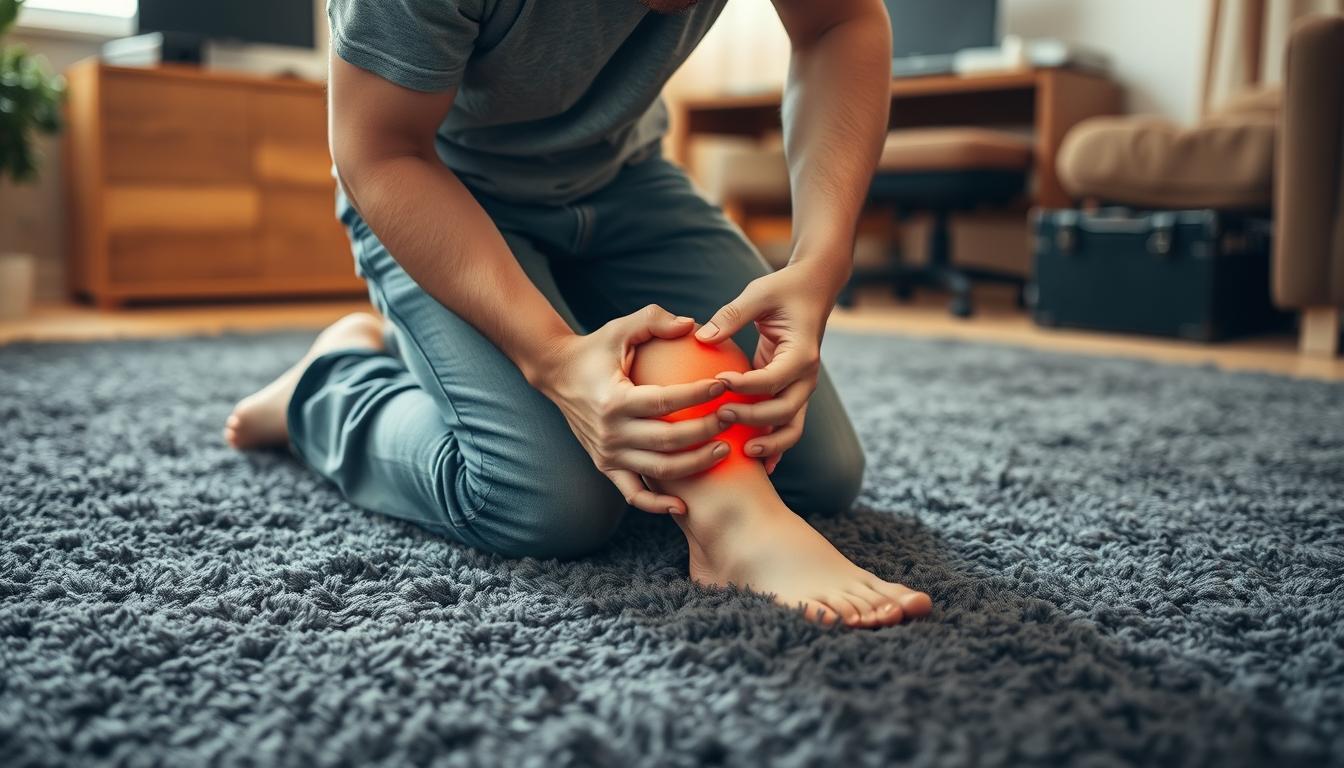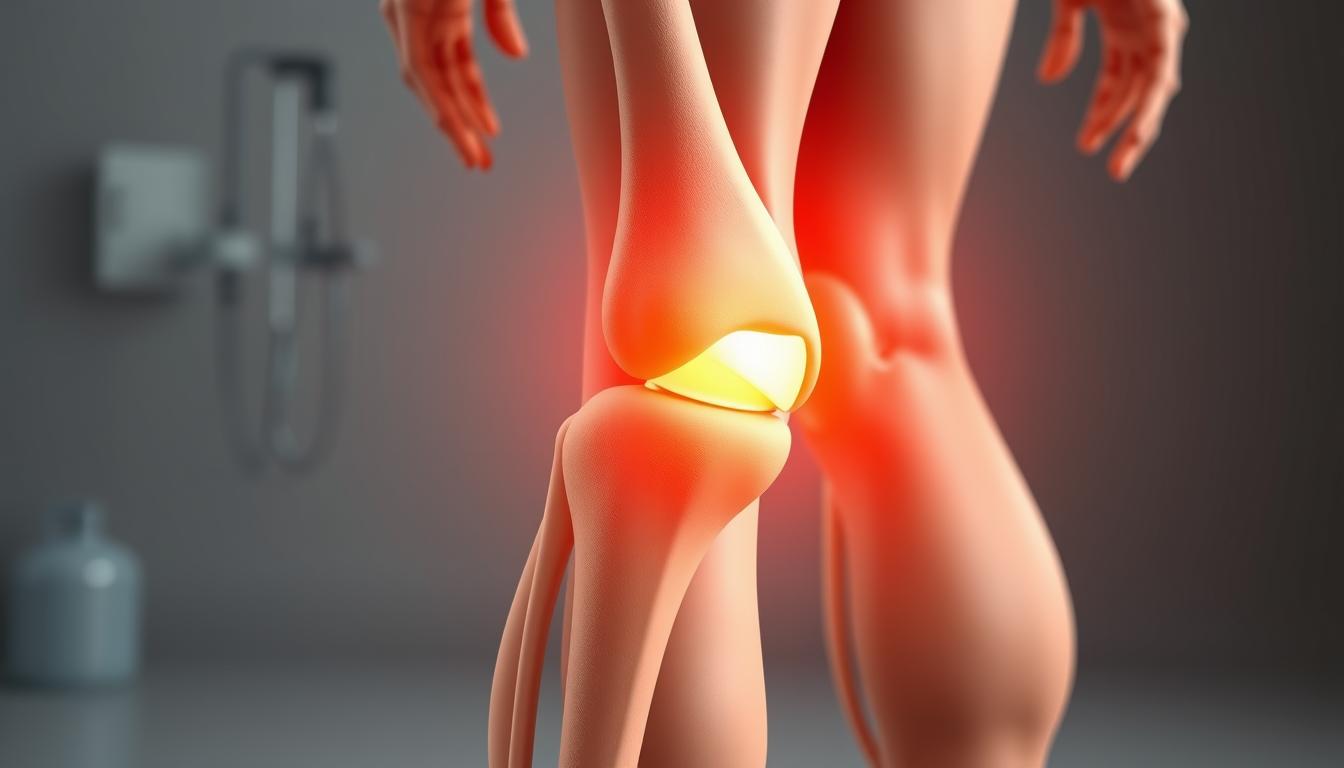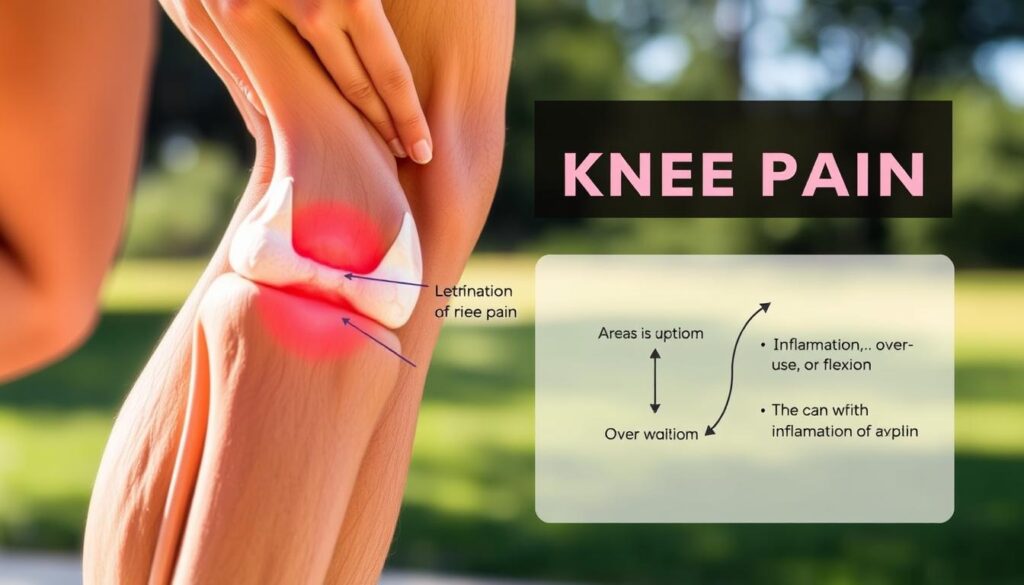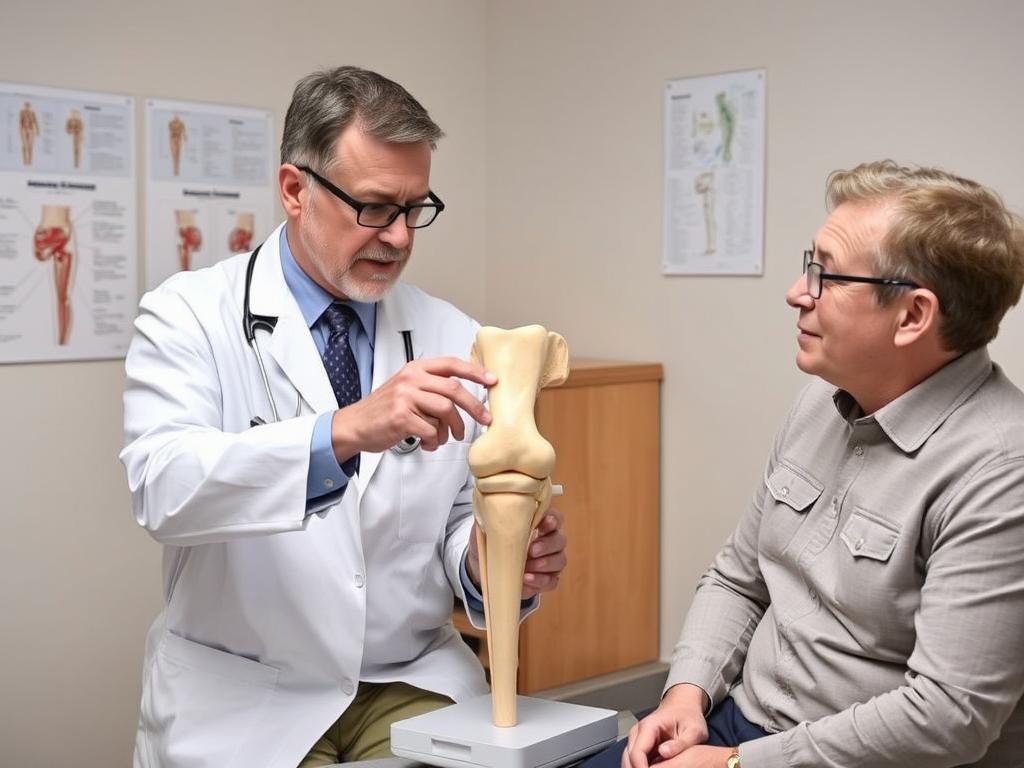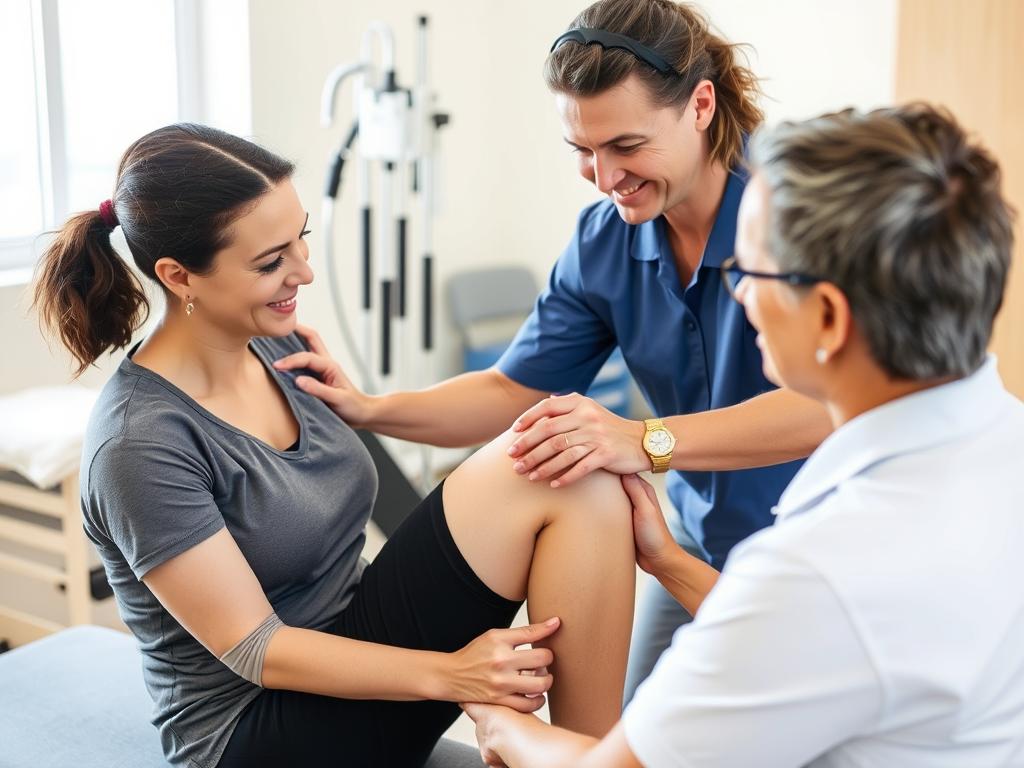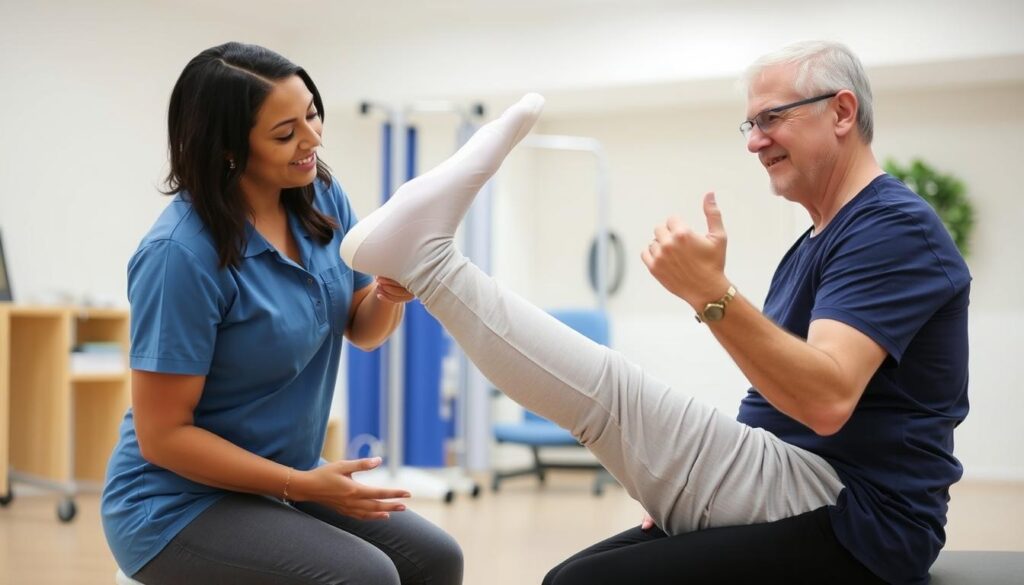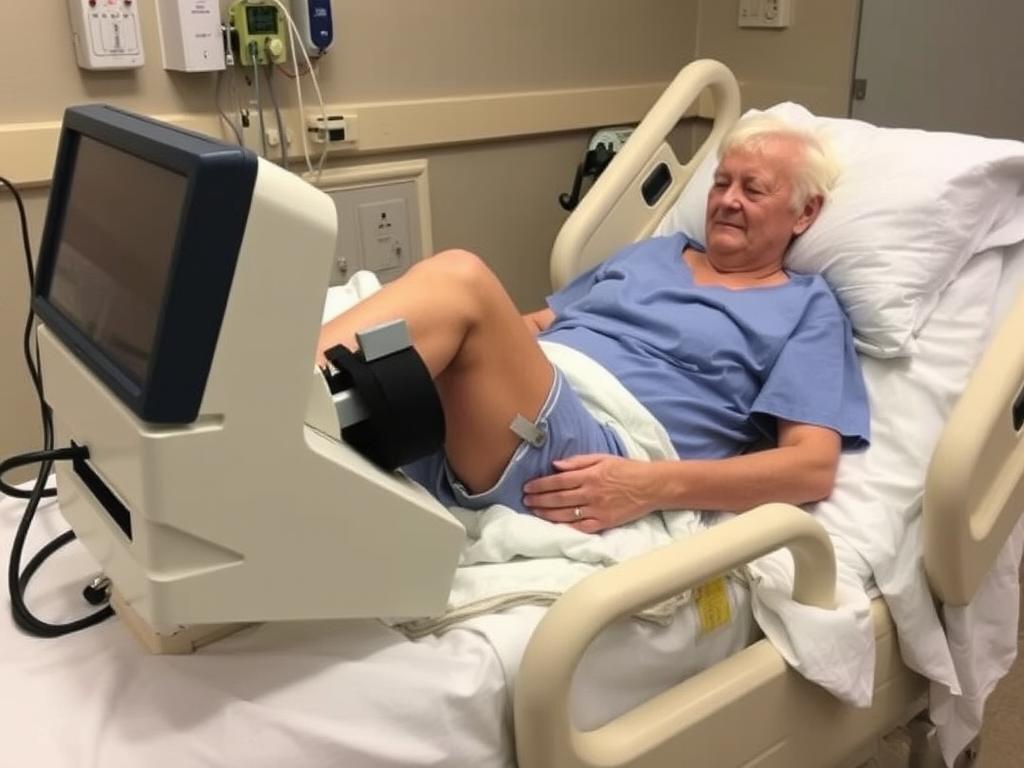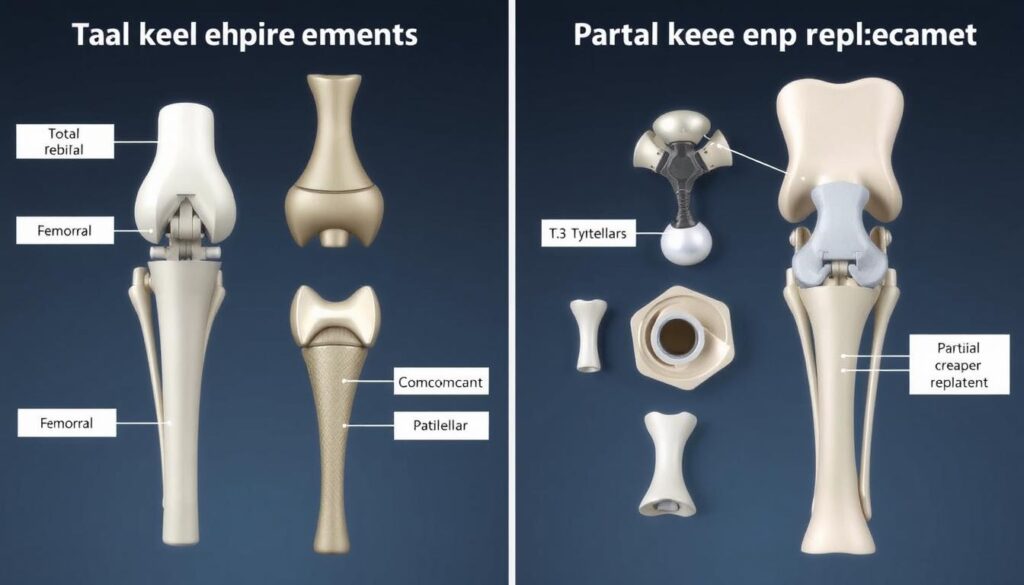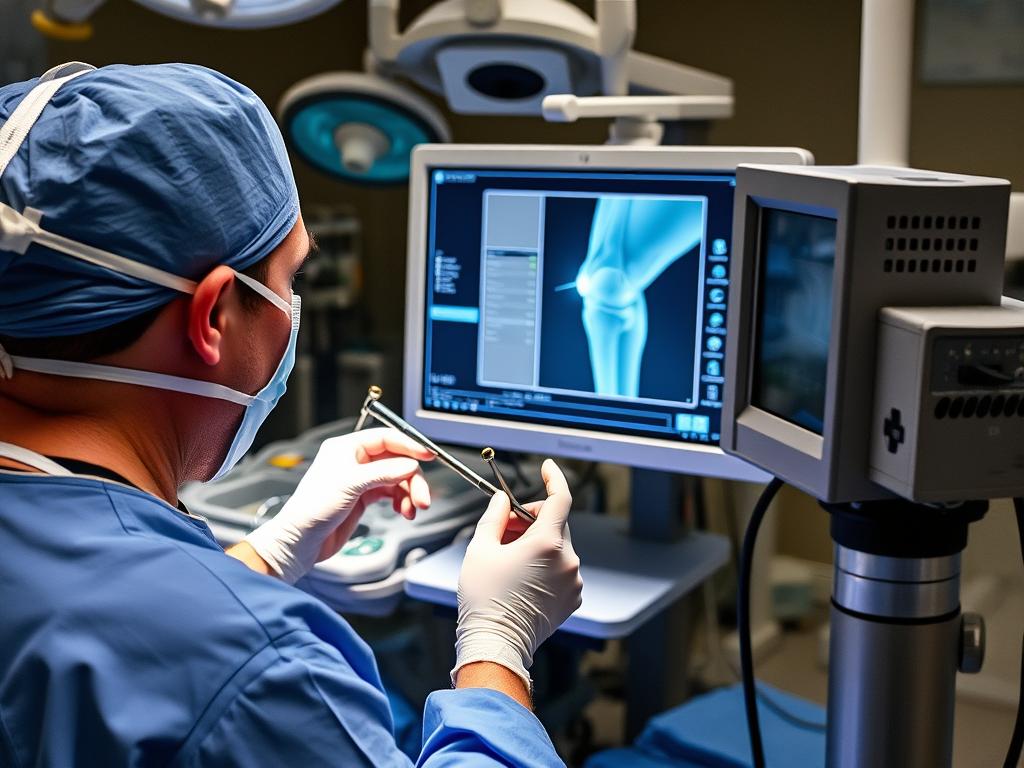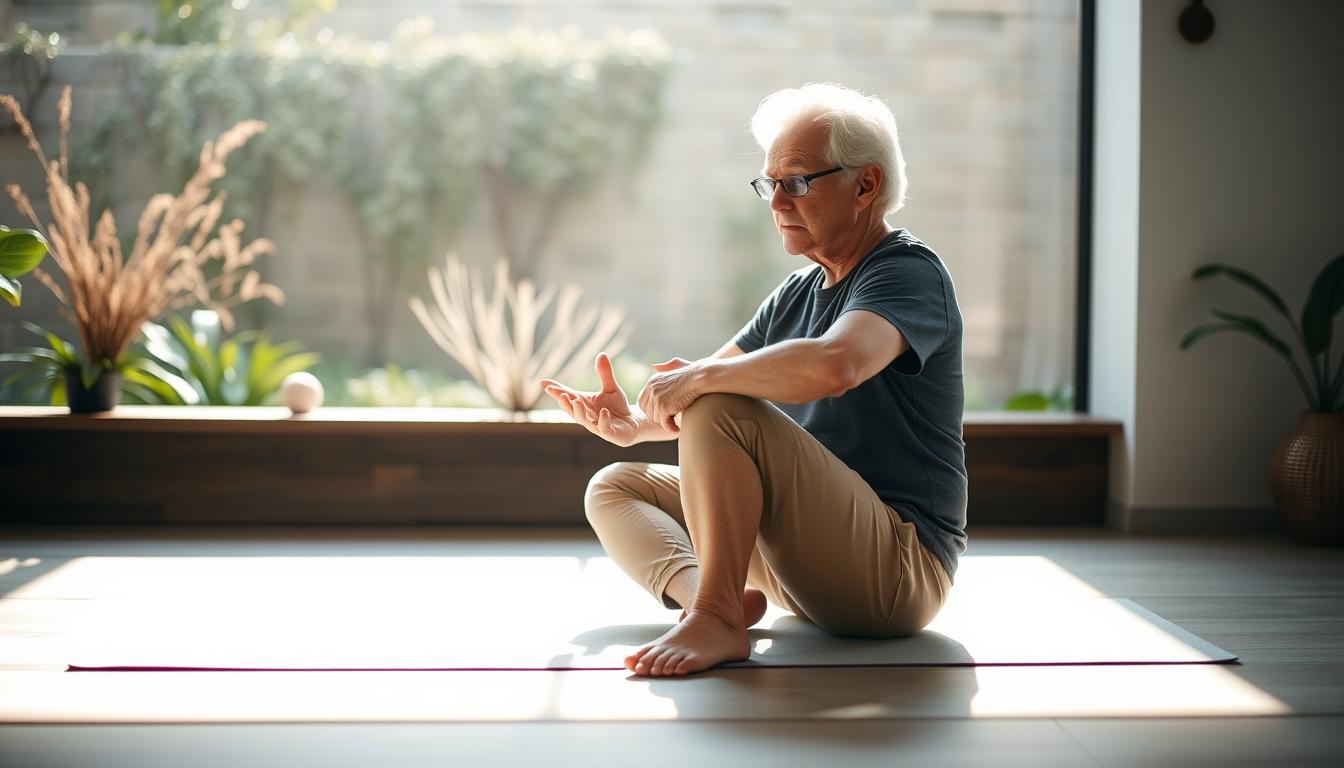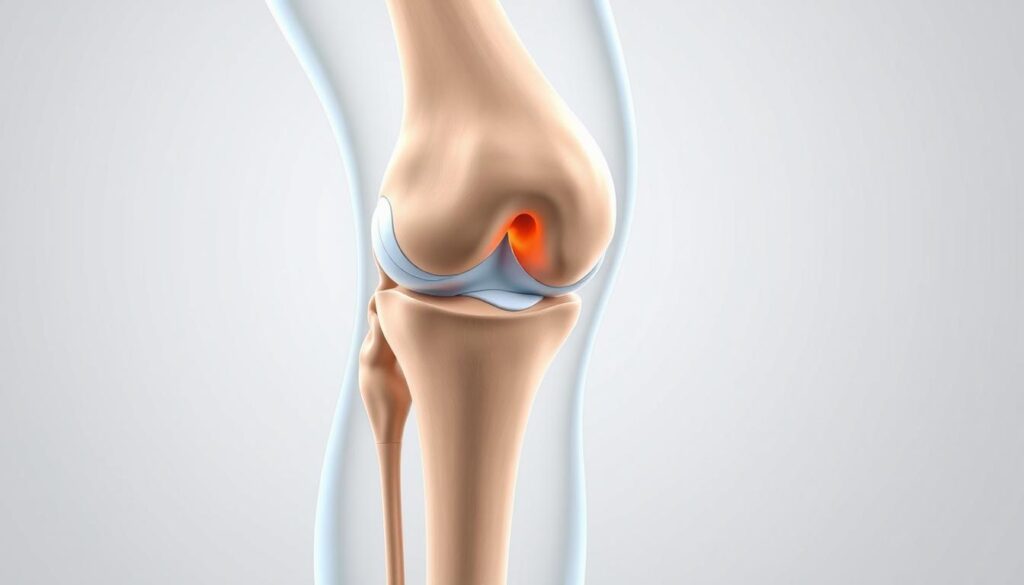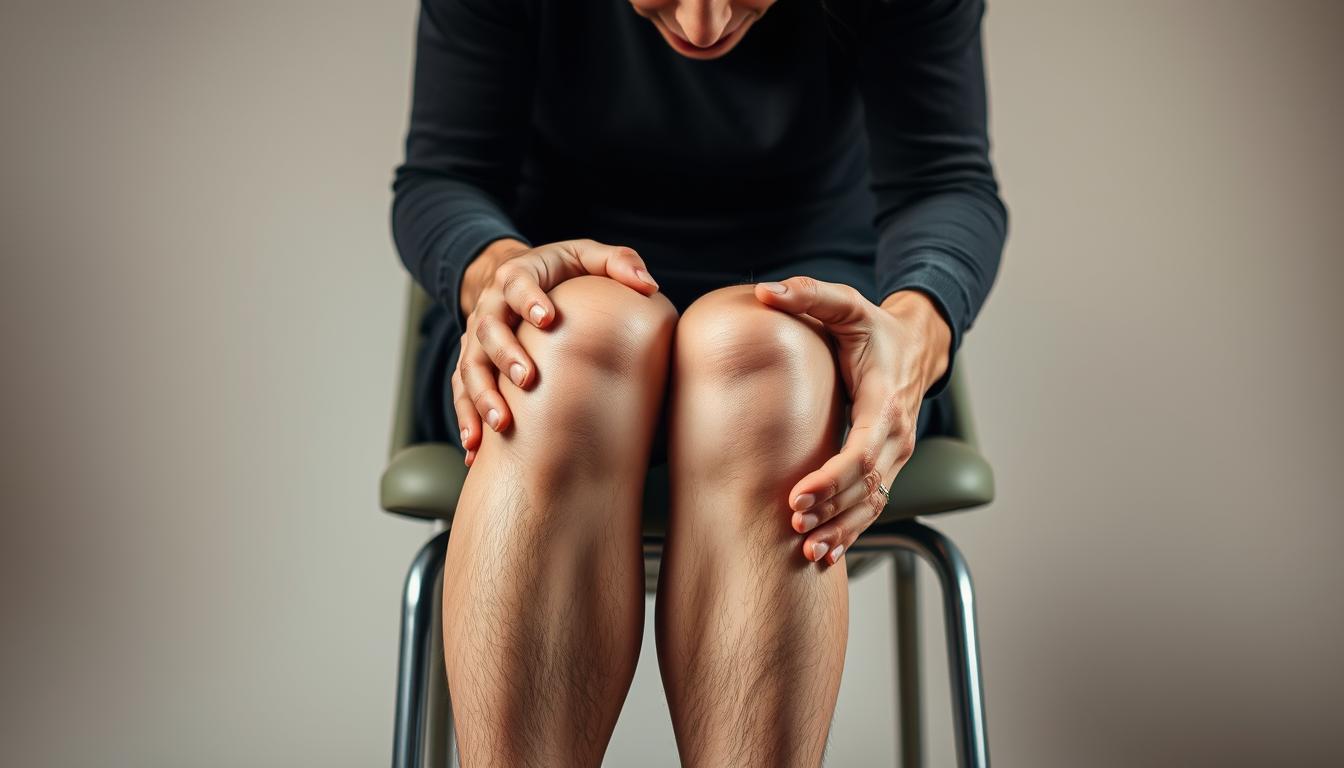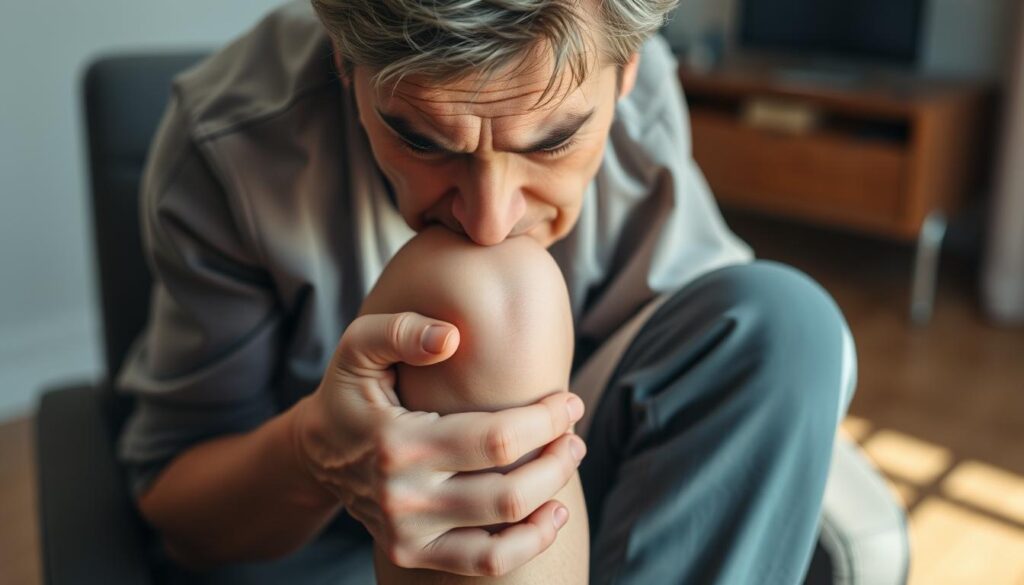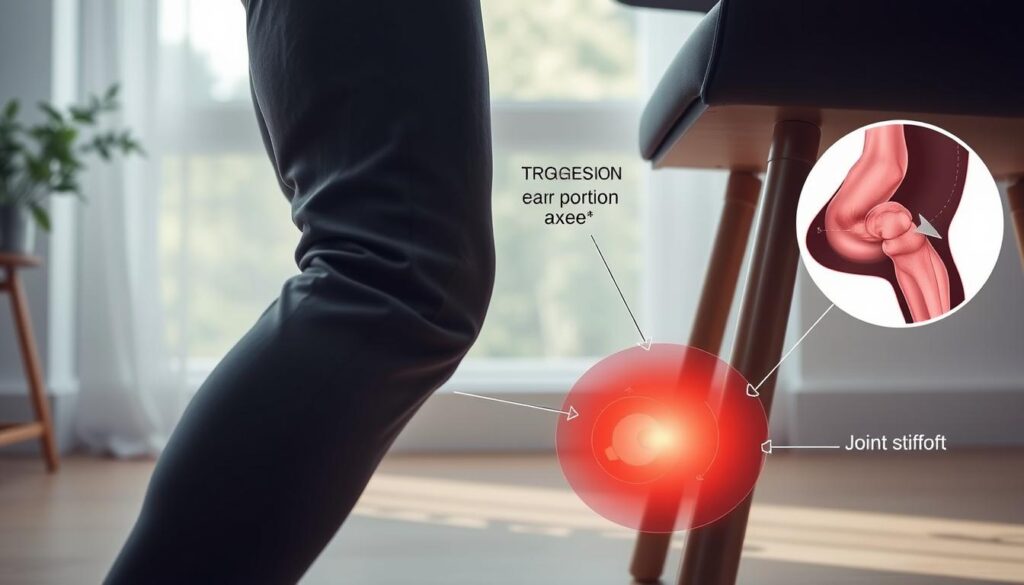Have you ever wondered why kneeling on carpet can sometimes trigger or aggravate knee pain?
This common issue affects many, and understanding its root causes is crucial for finding relief. We explore the mechanics behind why kneeling, especially on carpet, can lead to discomfort in the knee joint. The act of kneeling increases mechanical compression, causing the kneecap to push against the thigh bone, which can lead to various types of pain.
We’ll delve into the conditions associated with this type of pain, such as bursitis, and discuss why carpet, despite its softness, can still cause issues. Understanding these factors is key to managing and alleviating knee pain.
Key Takeaways
- Understanding the mechanical compression that occurs when kneeling.
- Exploring common conditions associated with knee pain during kneeling.
- Discussing why carpet can be a contributing factor to knee discomfort.
- Outlining potential solutions and management strategies for knee pain.
- Introducing the importance of addressing underlying causes for relief.
Understanding Why Kneeling on Carpet Causes Knee Pain
Many people experience knee pain when kneeling on carpet, but the reasons behind this discomfort are not always clear. To comprehend this issue, we need to examine the mechanics involved in kneeling and how carpet affects the knee joint.
The Mechanics of Kneeling
Kneeling is an activity that involves bending the knee joint, which can put pressure on various structures within the knee, including the patella (kneecap), surrounding soft tissues, and the joint itself. When we kneel, our body weight is concentrated on a relatively small area, increasing the pressure on the knee. This pressure can be exacerbated by the surface on which we kneel.
How Carpet Affects Knee Pressure
The type of surface we kneel on significantly affects the pressure distribution on our knees. Carpet, in particular, can create uneven pressure distribution due to its soft and sometimes uneven surface. Different types of carpet, such as plush, berber, low-pile, and high-pile, can affect knee pressure differently during kneeling activities. For instance, a soft, plush carpet might provide initial comfort but can also lead to uneven pressure distribution as the carpet fibers compress under body weight.
Additionally, the carpet padding underneath can influence the stability of the kneeling surface. If the padding is too soft or uneven, it can increase lateral stress on knee structures, potentially leading to discomfort or pain. Furthermore, carpet fibers can create friction against the skin covering the knee, potentially contributing to irritation and inflammation over time.
- The uneven surface of carpet can lead to increased pressure on certain areas of the knee.
- Different carpet types affect knee pressure in various ways during kneeling.
- Carpet padding can influence the stability of the kneeling surface and potentially increase stress on knee structures.
Understanding these factors can help us appreciate why kneeling on carpet can cause knee pain. By recognizing the role of surface type and condition in knee health, we can take steps to mitigate potential discomfort and address underlying issues.
Common Conditions That Cause Knee Pain When Kneeling on Carpet
Knee pain when kneeling on carpet is often associated with specific knee conditions that affect different parts of the knee joint. Understanding these conditions is crucial for effective management and relief.
Prepatellar Bursitis (Housemaid’s Knee)
Prepatellar bursitis, commonly known as housemaid’s knee, is a condition characterized by inflammation of the prepatellar bursa. This bursa is located at the front of the kneecap and can become irritated due to repeated kneeling. Symptoms include swelling, redness, and pain at the front of the knee. Activities that involve frequent kneeling, such as carpet laying or cleaning, can exacerbate this condition. Treatment typically involves avoiding activities that aggravate the condition, applying ice to reduce inflammation, and using compression bandages.
Osteoarthritis of the Knee
Osteoarthritis is a degenerative joint disease that can cause knee pain when kneeling on carpet. It occurs when the cartilage that cushions the joints breaks down, leading to bone-on-bone contact and pain. Kneeling can be particularly painful as it puts additional stress on the knee joint. Symptoms may include pain, stiffness, and limited mobility. For those experiencing knee pain due to osteoarthritis, managing the condition through exercises, weight management, and proper footwear can help alleviate symptoms.
Patellar Tendonitis (Jumper’s Knee)
Patellar tendonitis, also known as jumper’s knee, occurs when the tendons connecting the kneecap to the shinbone become inflamed. This condition is common among athletes who participate in sports involving jumping. Symptoms include pain and swelling when bending or straightening the knee, particularly after periods of rest or activity. The angle of the knee when kneeling can create tension in the patellar tendon, potentially aggravating existing inflammation. Key factors that contribute to this condition include overuse of the tendon, improper kneeling techniques, and participation in sports that involve jumping and running.

- Patellar tendonitis develops from overuse of the tendon connecting the kneecap to the shinbone, particularly in active individuals.
- The angle of the knee when kneeling on carpet creates tension in the patellar tendon, potentially aggravating existing inflammation.
- Symptoms include pain at the front of the knee that worsens with activity and after periods of rest.
Recognizing Symptoms of Serious Knee Problems
Recognizing the symptoms of serious knee problems is essential for timely intervention and effective treatment. When experiencing knee pain, especially when kneeling on carpet, it’s crucial to assess whether the discomfort is temporary or a sign of a more significant issue.
While it’s normal to be more cautious with activities that cause knee pain, avoiding certain positions or decreasing activity can actually exacerbate the problem over time. Muscles become weaker and tighter when not moved through their full range of motion, potentially leading to further functional loss.
Warning Signs That Require Medical Attention
Certain symptoms indicate a need for immediate medical evaluation. If you experience severe pain, swelling, or redness around the knee, or if you have difficulty straightening or bending your knee, it’s essential to consult a doctor. These signs could indicate a serious injury or condition that requires prompt attention.
Additionally, if knee pain persists even when not kneeling or interferes with daily activities, it may suggest a more serious underlying problem. We should be aware of these warning signs to address potential issues early.
Differentiating Between Temporary Discomfort and Chronic Issues
Understanding the duration, frequency, and intensity of knee pain can help determine whether the issue is temporary or chronic. Temporary discomfort typically resolves with rest and conservative measures, whereas chronic knee pain persists over time and may worsen without proper treatment.
| Characteristics | Temporary Discomfort | Chronic Issues |
|---|---|---|
| Duration | Short-term, resolves with rest | Long-term, persists over time |
| Frequency | Occasional, related to specific activities | Frequent, may occur at rest |
| Intensity | Mild to moderate, manageable with self-care | Moderate to severe, interferes with daily activities |
Tracking knee symptoms and recognizing patterns can help identify whether the issue is related to normal wear and tear or a developing chronic condition. By being proactive and understanding these differences, we can take appropriate steps to address knee pain effectively.
Immediate Relief Strategies for Knee Pain When Kneeling on Carpet
For individuals who frequently kneel on carpet, knee pain can be a significant issue, but immediate relief is possible through various methods. When engaging in activities that involve kneeling, such as gardening or home repairs, it’s essential to take proactive steps to minimize knee discomfort.
Immediate relief is crucial to prevent further irritation and potential long-term damage. We will explore several strategies to help alleviate knee pain when kneeling on carpet.
The RICE Method
The RICE method, which stands for Rest, Ice, Compression, and Elevation, is a widely recognized approach for reducing knee pain and inflammation. Resting the affected knee is the first step, followed by applying ice to reduce swelling. Using compression bandages can also help, and elevating the leg above heart level can reduce blood flow to the area, thereby minimizing inflammation.
By implementing the RICE method, individuals can significantly reduce their knee pain and create a conducive environment for healing.
Over-the-Counter Pain Management Options
Over-the-counter (OTC) pain management options are available for individuals experiencing knee pain when kneeling on carpet. Medications such as ibuprofen or acetaminophen can help alleviate pain and reduce inflammation. It’s essential to follow the recommended dosage and consult with a healthcare professional if the pain persists.
Proper Kneeling Techniques to Minimize Pain
Changing positions frequently while kneeling can help avoid discomfort. Switching from kneeling on both knees to one knee and then alternating sides can redistribute the weight and reduce pressure on the knee joint. Additionally, shifting to a position on hands and knees or extending one leg out to the side can provide relief.
By adopting proper kneeling techniques, individuals can minimize knee pain and continue with their activities without significant discomfort.
Protective Equipment and Modifications
Protective gear and modifications can make a substantial difference in comfort for those who frequently kneel on carpet. We will explore various options to reduce knee pain associated with kneeling.

Choosing the Right Knee Pads for Carpet Work
When selecting knee pads for use on carpet, it’s crucial to consider the thickness, density, and pressure distribution properties. We review various kneeling pads designed specifically for carpet surfaces to help you make an informed decision.
The right knee pads can provide adequate cushioning and support, reducing pressure on the knee and alleviating pain. We discuss how to choose the best knee pads based on the type of knee pain and the duration of kneeling required.
Alternative Kneeling Surfaces and Cushions
Apart from knee pads, alternative kneeling surfaces and cushions can also provide relief. We examine various options, including DIY solutions using household items like rolled-up towels or yoga mats, which can be effective for temporary relief.
Different cushioning solutions work better for different carpet types, from plush to berber. We provide guidance on selecting the most appropriate cushioning for your specific carpet type and kneeling needs, ensuring comfort and reducing pain during various activities.
Strengthening Exercises to Reduce Knee Pain When Kneeling
The key to minimizing knee pain when kneeling lies in strengthening the muscles that support the knee joint. As our Hinge Health care team emphasizes, “movement is medicine” because it keeps the knees flexible and mobile, preventing muscle tightness that can lead to more pain.
To achieve this, we need to engage in exercises that support healing and strengthen the muscles, tendons, and ligaments around the knee. A well-rounded exercise program can significantly reduce knee pain when kneeling by improving overall knee health.
Quadriceps Strengthening Exercises
Strengthening the quadriceps is essential for knee health. Quadriceps strengthening exercises, such as straight leg raises and squats, can help stabilize the knee and reduce pain. For example, you can perform a straight leg raise by lying on your back, tightening your quadriceps, and lifting your leg about 12 inches off the ground. Hold for a few seconds and lower it back down. Repeat this exercise 10-15 times.
Another effective exercise is the wall squat, where you stand with your back against the wall and slide down into a squat position, keeping your knees bent at a 90-degree angle. Hold this position for 10-15 seconds and repeat 10 times.
Flexibility and Stretching Routines
In addition to strengthening exercises, flexibility and stretching routines play a crucial role in maintaining knee health. Gentle stretching can help improve flexibility and reduce stiffness. For instance, you can perform a hamstring stretch by sitting on the floor with your legs straight out in front of you. Lean forward, reaching for your toes, and hold for 15-30 seconds.
Another beneficial stretch is the quadriceps stretch, where you stand with one hand against a wall for balance, bend one knee, and grab your ankle with your hand. Gently pull your heel towards your buttocks until you feel a stretch in the front of your leg. Hold for 15-30 seconds and switch legs.
Low-Impact Exercises for Knee Health
Low-impact exercises are ideal for building knee strength and resilience without causing additional pain or damage. Activities like swimming, cycling, and elliptical training are excellent options because they minimize stress on the knee joint while promoting strength and flexibility. For example, swimming laps or participating in water aerobics can be very beneficial.
As knee health improves, you can progress from gentle movements to more challenging low-impact exercises. It’s essential to monitor pain levels during exercise to ensure that the activities are beneficial rather than harmful to knee recovery.
Lifestyle Modifications to Improve Knee Health
By incorporating a few key lifestyle modifications, individuals can reduce their knee pain and improve their overall well-being. These changes can be simple yet effective in minimizing knee stress and promoting healthier knees.
Weight Management for Reduced Knee Pressure
Maintaining a healthy weight is crucial for reducing knee pressure. Excess weight puts additional stress on the knee joint, exacerbating pain and potentially leading to further damage. By managing weight through a balanced diet and regular exercise, individuals can significantly reduce the pressure on their knees, thereby alleviating pain and improving knee health.
Posture and Movement Adjustments in Daily Activities
Adjusting posture and movement during daily activities can also play a significant role in reducing knee pain. This includes being mindful of body posture and alignment during sitting, standing, and walking to reduce unnecessary stress on the knee structures. For example, individuals can modify their gardening technique by squatting instead of kneeling or by raising their garden beds to a more comfortable height. Proper sitting, standing, and walking mechanics are essential for minimizing knee stress. Additionally, making ergonomic adjustments to common activities and household chores can help maintain functionality while protecting vulnerable knees.
We can make slight changes to our daily activities to reduce knee pain. For instance, taking more frequent breaks or altering the way we perform tasks can make a significant difference. By doing so, we can continue enjoying our favorite activities without exacerbating knee pain.
When to Seek Professional Help for Persistent Knee Pain
Understanding when to consult a healthcare professional about knee pain is crucial for effective treatment and relief. If you’re experiencing knee pain when kneeling on carpet that persists or worsens, it’s essential to recognize the signs that indicate a need for medical attention.
You should consult a doctor if you experience any of the following: a new significant trauma within the last 7 days, the knee is misshapen or immediately swollen following a recent injury, inability to put weight on the leg, the knee becomes immediately swollen, knee locks or gives way, or the knee is tender. Additionally, if your symptoms continue to affect your day-to-day life or don’t improve after a couple of weeks, it’s time to reach out to your healthcare provider.
Various specialists can treat knee conditions, including primary care physicians, orthopedists, rheumatologists, and physical therapists. Your healthcare provider can determine a treatment plan that works for your specific condition. If you’re experiencing symptoms of an infection, such as fever or warmth around the affected area, seek medical care promptly.
Preparing for your medical appointment by tracking your symptoms and having questions ready will ensure productive communication with your healthcare provider.
FAQ
What are the common causes of knee pain when kneeling on carpet?
We often experience knee pain when kneeling on carpet due to conditions such as prepatellar bursitis, also known as housemaid’s knee, or osteoarthritis of the knee joint. The pressure and friction from kneeling on hard surfaces, even with carpet, can irritate the bursae or joint, leading to inflammation and pain.
How can I reduce knee pain when kneeling on carpet?
To alleviate knee pain, we recommend using the RICE method (Rest, Ice, Compression, Elevation) and taking over-the-counter pain management options. Additionally, wearing knee pads designed for carpet work or using alternative kneeling surfaces and cushions can help minimize discomfort.
What exercises can help strengthen my knees and reduce pain when kneeling?
We suggest incorporating quadriceps strengthening exercises, flexibility and stretching routines, and low-impact exercises into our routine to improve knee health and reduce pain. Strengthening the muscles around the knee joint can help support and stabilize the joint, reducing the risk of injury.
When should I seek medical attention for knee pain when kneeling on carpet?
If we experience persistent or severe knee pain, swelling, or difficulty moving the knee joint, it’s essential to seek professional help. A doctor can diagnose the underlying cause of the pain and recommend appropriate treatment options to address the condition.
Can lifestyle modifications help improve knee health and reduce pain when kneeling?
Yes, maintaining a healthy weight, making posture and movement adjustments in daily activities, and avoiding repetitive strain on the knee joint can all contribute to improved knee health and reduced pain when kneeling on carpet.
